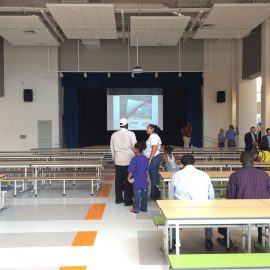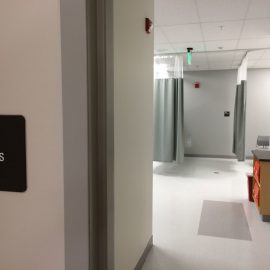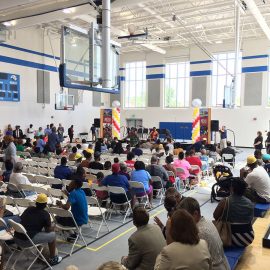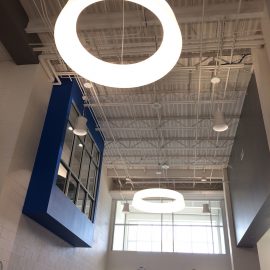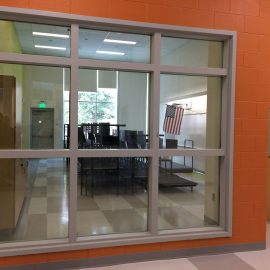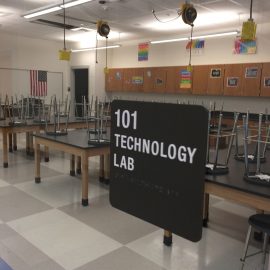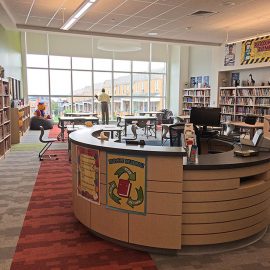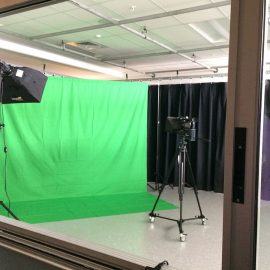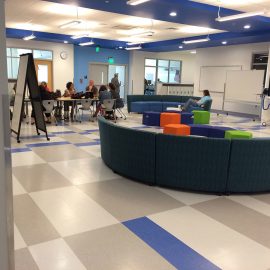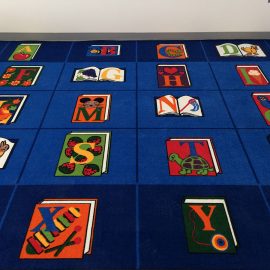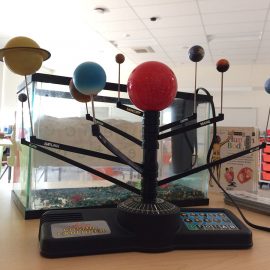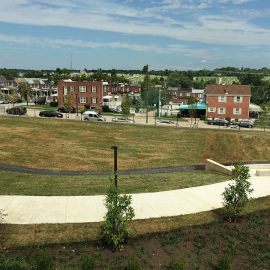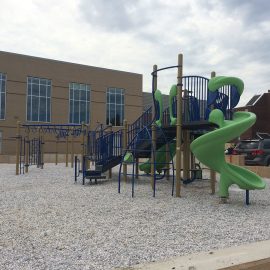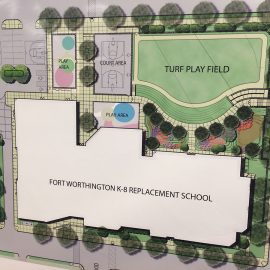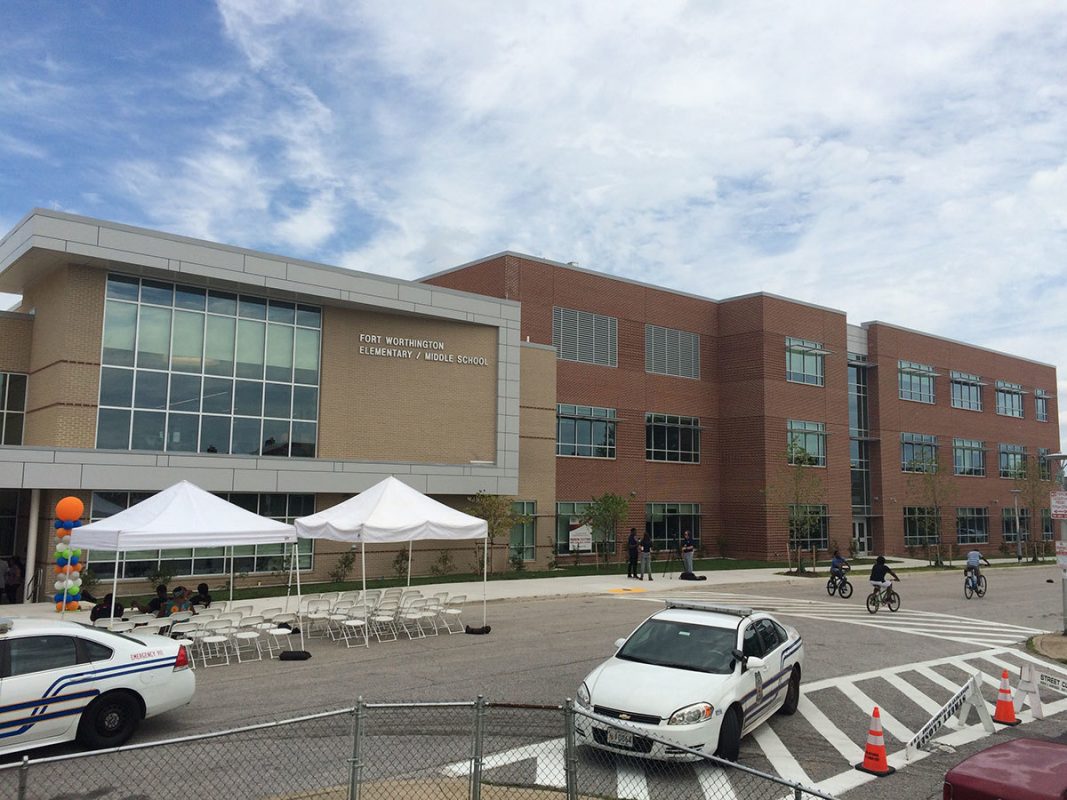
Wednesday was a big day in Clifton-Berea, a disadvantaged neighborhood in East Baltimore that usually doesn’t receive a lot of attention unless there’s a tragedy, like the six homicides the neighborhood has experienced already this year.
But this week’s commotion was of a celebratory sort, as residents, educators, and public officials gathered for a ribbon-cutting ceremony at the neighborhood’s new Fort Worthington Elementary/Middle School.
The school is the first building completed as part of Baltimore City Public Schools’ (BCPSS) ambitious 21st Century School Buildings Program. The program—a partnership between BCPSS, the Maryland Stadium Authority, the city, and the state—dedicates $1.1 billion toward the renovation or reconstruction of at least 23 city school buildings within the next decade. Funded in part by Baltimore City’s 5 cent bottle tax, the initiative aims to modernize learning facilities throughout the city, many of which suffer from unreliable heating and cooling systems, antiquated amenities, and even unsafe drinking water. The new Fort Worthington, which can accommodate up to 700 students in grades K through 8, was completed on time and on budget at a cost of $37 million.
The new school’s opening heralds a victory for public education advocates who lobbied for the 21st Century School Buildings Project and its atypical funding model. Normally, school districts use capital improvement funds to pay for construction and renovation on a per-project basis. But BCPSS’s capital improvement funding is so anemic—and its need is so great—that an alternative financing model was sought.
“If we had had to wait for [capital improvement funding] money to get new schools, we’d be getting, like, one school every two years,” explained Sonja Santelises, the CEO of Baltimore City Public Schools, who we profile in our September issue.
The 21st Century School Buildings Program’s $1.1 billion in funding allowed BCPSS to launch several projects at once, and now those projects are coming to fruition. One other school, Frederick Elementary, located in Southwest Baltimore, will open this month. Two others—John Eager Howard Elementary School and Lyndhurst Elementary/Middle School—are slated to open in January 2018. And more schools around the city are in various stages of construction. Information about the 21st Century School Buildings Project, including status reports on the other schools, is available at the 21st Century Schools website.
On Wednesday, community members oohed and ahhed as they streamed into the gleaming new facility filled with natural light, vibrantly colored furniture, and tech-equipped classrooms.
RaShawn Stanley, a rising seventh grader at Fort Worthington who spoke at the ribbon cutting ceremony, says she loves the new school and thinks that it will provide an improved learning environment. “It’s hard to learn when your school is broken down and you have so many distractions around you. So this will be better,” she said.
In addition to new classrooms, there’s an art room, band and music rooms, a guidance center, a media center with an attached video production studio, and a technology lab. The 102,000-square-foot school also houses spaces that can be used by the community, including a health suite and indoor and outdoor recreation and play areas.
“Take a moment to look at where we are,” said Cheryl A. Casciani, the chair of the Baltimore City Board of School Commissioners. “You are in a Baltimore City public school and it is beautiful. And that is what our children deserve.”
Santelises agreed, telling the crowd in the school’s new blue-and-white gymnasium that the project “says we are not educating [students] for a past. We are educating [them] for a future that many of us adults will never see.”
With that in mind, scroll through the slideshow below to see images of the brand spanking new Fort Worthington Elementary/Middle School.

